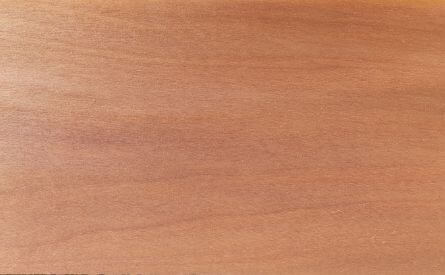Genipa
Irayol / Genipa americana

Local Names
Distribution & Tree
Wood Appearance
Processing Properties
Strength & Durability
Wood Uses
Ecological & Social Importance
Genip’s fruit produces a sour, refreshing drink. When immature, it yields an indelible stain. The fruit is eaten as a remedy for jaundice in El Salvador. It is a common practice in Puerto Rico to cut up the fruits, steep them in water until there is a little fermentation, then add flavoring and drink the infusion as a cold remedy. The juice expressed from the leaves is commonly given as a fever reducer in Central America. The pulverized seeds are emetic and caustic.
The juice of the unripe fruit is colorless but oxidizes on exposure to the air and gradually turns light brown, then blue-black, and finally jet black. It has been commonly employed by South American Indians to paint their faces and bodies for adornment and to repel insects; and to dye clothing, hammocks, utensils and basket materials a bluish-purple. The dye is indelible on the skin for 15 to 20 days.
Because the fruit and its infusion have unusually good keeping quality, Puerto Rican scientists investigated the possible presence of antibiotic principles and proved the existence of antibiotic activity in all parts of the fruit. In 1964, scientists isolated and identified two new antibiotic cyclopentoid monoterpenes, named aptly genipic and genipinic acids.
| Reference Species (by Janka Hardness) | ||||
| Technical Characteristics | Jagua | White Oak | Northern Red Oak | |
| Density | kg/m3 | 705 | 750 | 700 |
| Janka Hardness | kgf | 640 | 612 | 553 |
| Bending Stiffness (Modulus of Elasticity) | GPa | 11.8 | 12.2 | 12.1 |
| Bending Strength (Modulus of Rupture) | MPa | 119.3 | 102.3 | 99.2 |
| Crushing Strength | MPa | 51.4 | 50.8 | 46.8 |
| Shrinkage, Radial | % | 4.6% | 5.6% | 4.0% |
| Shrinkage, Tangential | % | 9.1% | 10.5% | 8.6% |
| Shrinkage, Volumetric | % | 13.5% | 16.3% | 13.7% |
| T/R Ratio | 2.0 | 1.9 | 2.2 | |
| Values determined at 12% humidity | ||||
|---|---|---|---|---|
DENSITY
JANKA HARDNESS
BENDING STIFFNESS
BENDING STRENGTH
CRUSHING STRENGTH
SHRINKAGE
Values are for reference only and cannot be guaranteed. Wood is a natural material and physical and mechanical properties may vary depending on age, genetics, and other factors. We encourage customers to consult the references provided in the bibliography. For further explanations of wood’s key technical characteristics, an excellent resource is the Wood Database with articles on Density (average dried weight); Janka hardness; Elastic Modulus; Rupture Modulus; Crushing Strength; Radial, Tangential and Volumetric Shrinkage.






